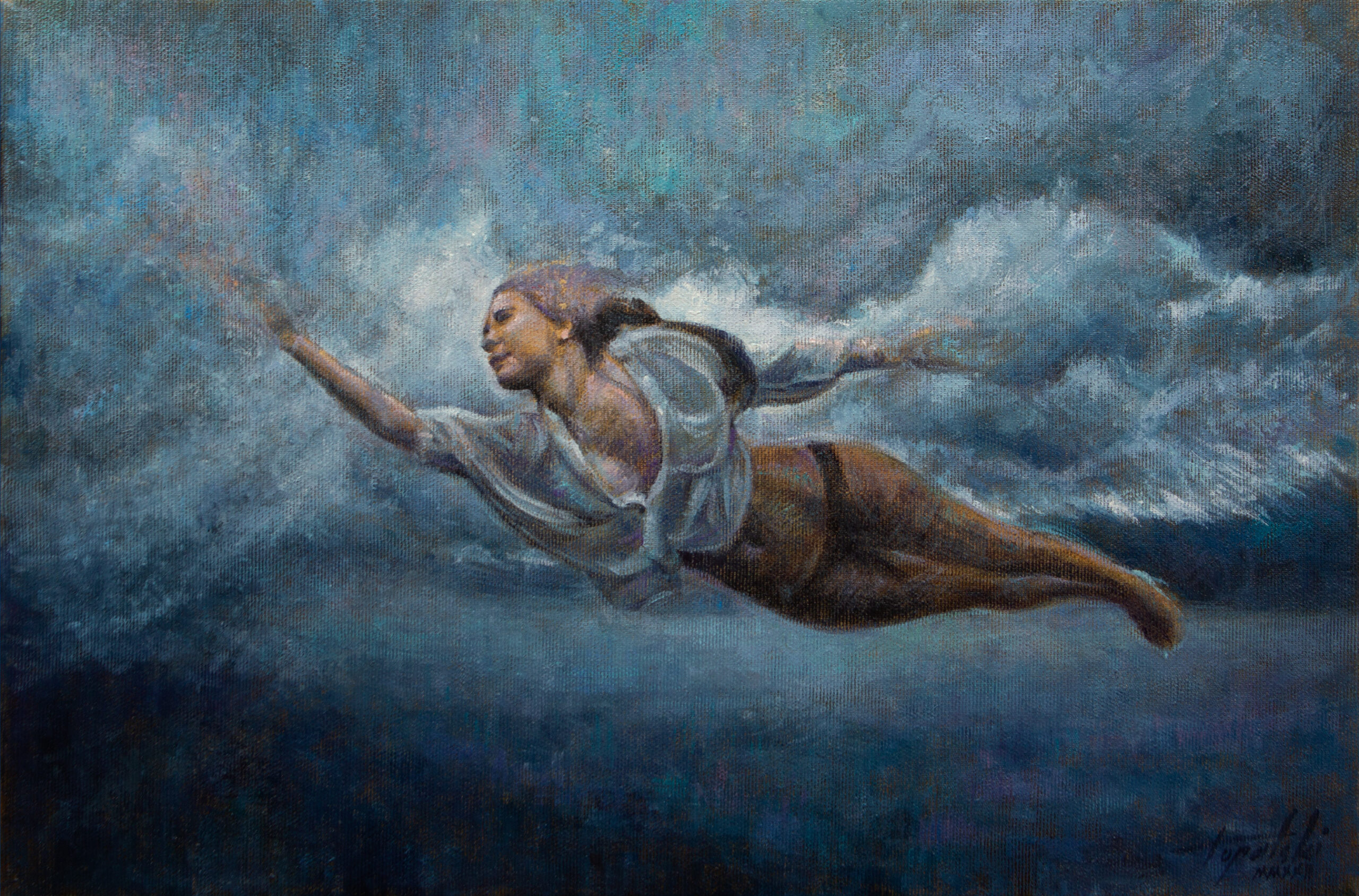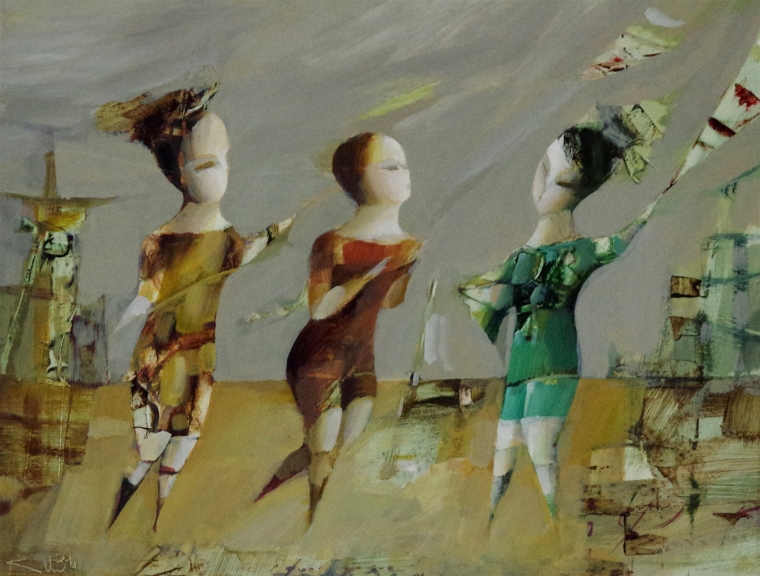The Evolution of Art: A Comprehensive Overview to Figurative Oil Painting
The Evolution of Art: A Comprehensive Overview to Figurative Oil Painting
Blog Article
A Journey Through the Globe of Metaphorical Oil Paint: Discovering the Distinct Features and Psychological Depth of the Tool

History of Figurative Oil Paint
Emerging during the late Middle Ages and flourishing throughout the Renaissance, figurative oil paint has an abundant background that reflects both creative development and social evolution. Oil paints were used in Europe as a means to enhance the luminance and depth of color in artworks. Artists such as Jan van Eyck originated the medium, showing its possible to record detailed details and appearances, thus permitting an extra lifelike depiction of the human form.
As the Renaissance advanced, prominent figures like Leonardo da Vinci and Michelangelo broadened the boundaries of figurative oil painting. They highlighted physiological accuracy and point of view, developing works that shared emotion and narrative depth. The medium's flexibility enabled testing with light and shadow, bring about the development of chiaroscuro techniques that further enhanced the visual experience.
Distinct Characteristics of the Tool
The advancement of metaphorical oil paint has been significantly influenced by the distinct characteristics of the medium itself. Oil paint, made up of pigments put on hold in oil, uses musicians an impressive versatility that enables a vast array of coatings and structures. Its slow-moving drying time allows careful mixing and layering, which can develop deepness and luminosity unattainable in other tools.
Moreover, oil paint's rich coloring supplies vibrant colors that keep their intensity gradually. This characteristic is crucial in figurative painting, where capturing the nuances of skin tones and emotional expressions is vital. The capacity to achieve subtle gradients and soft transitions enhances the realistic high quality of subjects, allowing artists to share complex emotional states.
Additionally, oil paint sticks well to numerous surface areas, such as wood, canvas, and steel, widening the range of creative expression. The medium's flexibility sustains various strategies, from comprehensive realistic look to meaningful brushwork, allowing artists to explore their specific styles.
Eventually, the one-of-a-kind residential properties of oil paint not only enhance the aesthetic experience however also empower artists to connect extensive stories, making figurative oil paint a deeply evocative art type.
Designs and techniques Used
Within the realm of metaphorical oil painting, musicians use a varied range of techniques and styles that add to the deepness and richness of their work. One famous technique is polishing, where transparent layers of paint are used over dried layers, allowing light to penetrate and mirror, enhancing brightness and deepness. This technique is frequently made use of to accomplish a feeling of realistic look and complexity in complexion.
Another strategy is impasto, where thick layers of paint are used with a combination blade or brush, producing a distinctive surface area that adds a three-dimensional high quality to the paint. This design can stimulate a visceral response, attracting the audience in through its responsive nature.
Musicians likewise check out various brushwork styles, from penalty, in-depth strokes that record elaborate attributes to more comprehensive, much more expressive strokes that share motion and emotion (figurative oil painting). The selection of shade palette considerably affects the general mood of More about the author an item, with cozy tones commonly giving sensations of convenience and cool tones recommending moody
Furthermore, the integration of chiaroscuro, the contrast in between light and shadow, allows musicians to develop dramatic results that improve the narrative top quality of their work. Each strategy and design is meticulously selected to raise the customer's experience and understanding.
Psychological Depth in Figurative Art
Emotional depth offers as a foundation in figurative art, enabling musicians to transcend simple representation and involve viewers on an extensive level. This psychological resonance is frequently achieved with the nuanced portrayal of human figures, expressions, and interactions. Artists harness the power of shade, shadow, and light to evoke sensations that reverberate deeply with the audience, creating a visceral link to the subject matter.
In metaphorical oil paint, the elaborate layering of paint can reflect the intricacies of human emotion. The option of palette, whether great or warm, plays a crucial function in establishing the state of mind and environment of an item. Softer hues might stimulate serenity and self-contemplation, while vibrant, different colors can interact tension and dramatization.

Influential Artists and Their Works
Countless significant artists have significantly formed the landscape of figurative oil painting, each adding unique resource perspectives and methods that remain to influence contemporary designers. Among these artists, Lucian Freud stands apart for his intense psychological depth and raw portrayal of the human form, commonly blurring the lines in between elegance and degeneration. Freud's jobs, characterized by thick, impasto brushstrokes, invite viewers to challenge the intricacies of identification and vulnerability.

Likewise, Andrew Wyeth's careful realistic look in pieces like "Christina's Globe" records extensive stories within seemingly straightforward structures. His use of light and shadow evokes a feeling of fond memories and psychological resonance, drawing visitors right into the intimate worlds he portrays.
In the realm of modern art, Kehinde Wiley has actually gotten acknowledgment for his lively, larger-than-life pictures that test conventional notions of representation. By putting individuals of color in contexts evocative classic portraiture, Wiley's work redefines the canon of art history.
These artists, together with others, have not only enriched metaphorical oil paint but have likewise expanded the discussion surrounding identity, culture, and feeling, making sure that the tool remains an essential form of expression in the art world. figurative oil painting.
Conclusion
In verdict, figurative oil paint continues to be an effective tool that envelops the complexities of human feeling via its abundant pigmentation and flexible strategies. The trip with metaphorical oil paint reveals its lasting value in the art world.
The expedition of figurative oil paint supplies a profound understanding into the interplay of method, emotion, and historic context that specifies this venerable tool. Oil paint, made up of pigments suspended in oil, uses musicians a remarkable convenience that allows for a large array of finishes and appearances.Within the realm of figurative oil painting, artists utilize a varied array of techniques and styles that contribute to the depth and richness of their job.Various influential artists have actually substantially shaped the landscape of figurative oil painting, each contributing unique viewpoints and strategies that continue to motivate modern makers.In final thought, metaphorical oil painting continues to be a powerful medium that envelops the complexities of human feeling through informative post its rich pigmentation and functional techniques.
Report this page